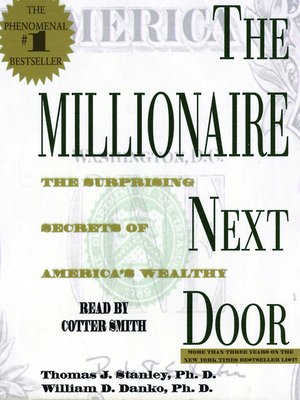

Millionaires are also bargain-conscious in other ways: they buy items on sale or at discount or factory outlets. In contrast, most car buyers spend 30% of their net worth on a vehicle, while millionaires spend only 1%. They often buy quality vehicles that are several years old, and they never lease or finance them. While you might think millionaires don’t need to budget, the fact is, they become wealthy and remain that way in large part by budgeting and controlling expenses.įor instance, millionaires don’t drive high-status vehicles. Both mindsets help them build wealth for the future. They move the ball by generating income and by smart planning and budgeting, and they and their families hold the defensive line by controlling their spending. In football terms, they play both great offense and great defense. Their watchwords are hard work, discipline, frugality, and smart investment.

Many millionaires don’t stand out in their neighborhoods. The typical millionaire’s frugal lifestyle could be described as nondescript middle class. He lives above his means, spending significantly more than Richards to maintain the lifestyle/status associated with attorneys. HiIs expected net worth is $470,000, but it’s actually $226,511. Under-accumulator (UAW): Davidson, 51, is an attorney with an income of $92,330.He lives a modest, blue-collar lifestyle. His net worth should be $451,000, but it’s actually $1.1 million. Prodigious accumulator (PAW): Richards, 50, owns a mobile home dealership and his income is $90,200.

Here’s an example of each (both people are in the same income/age category): If you’re at half or less than the expected level for your category, you’re an under-accumulator. Often, prodigious accumulators have four times the wealth of under-accumulators in their category. To be solidly in the prodigious accumulator category, you should be worth two times your expected level of wealth.


 0 kommentar(er)
0 kommentar(er)
